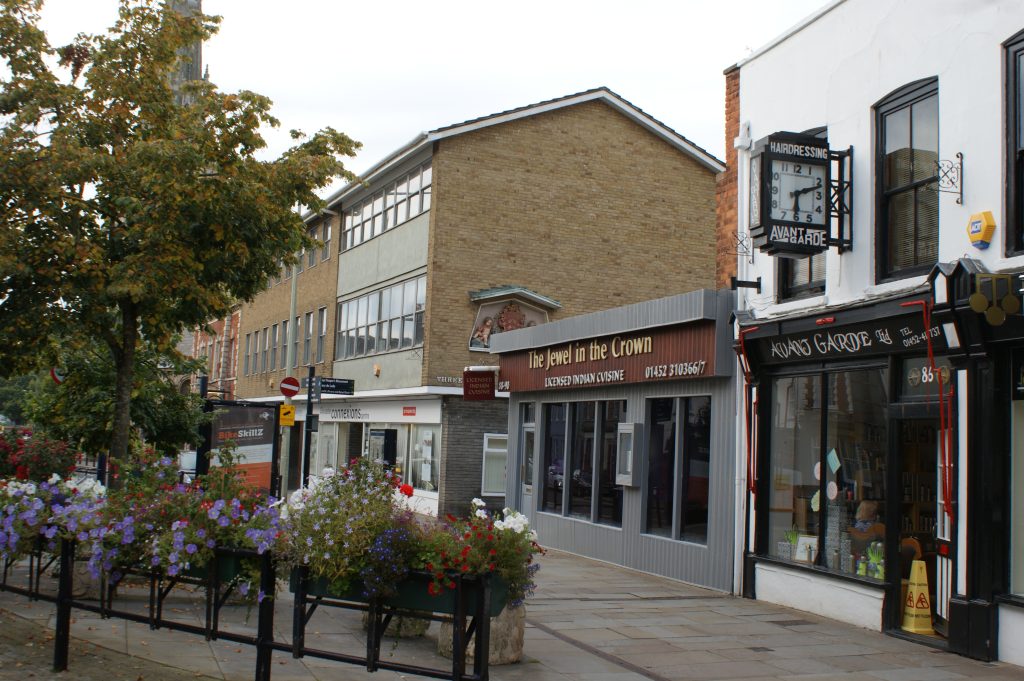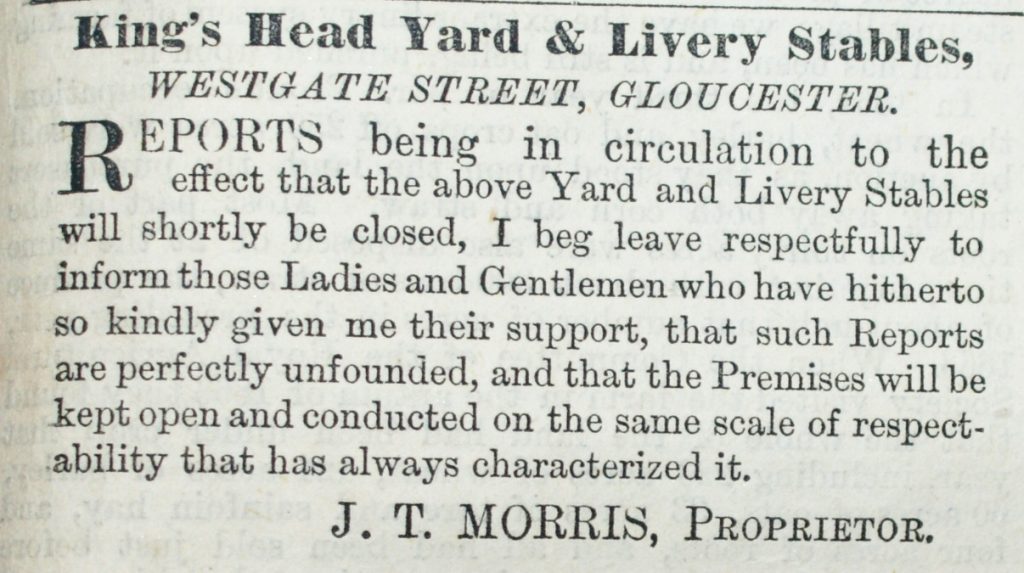The following is taken from ‘The Story of Gloucester’s Pubs’ by Darrel Kirby (The History Press 2010). Reproduced with the kind permission of Darrel Kirby.

The first licensing reference that I have found for the Kings Head is from 1736, although it is clearly older than that, dating to the early sixteenth century, probably about 1520. From the early eighteenth century it was one of the most important social centres in the city and by the start of the nineteenth century it was vying with its arch rival, the Bell in Southgate Street, as the most important.
The Kings Head was a coaching inn with stabling for more than eighty horses. Gloucester mercer John Harris started a coaching business with a coach running from Gloucester to London as early as 1722. By 1733 this was kept at the Kings Head. He also ran a stage from Gloucester to Bristol with Nathaniel Underwood of Bristol, becoming embroiled in a price war over the route with the Golden Heart in that year.
The enterprise was taken on by John Turner in 1753 who operated a ‘Flying Stagecoach’ which stopped overnight at the Kings Head on its route from Hereford to London. The journey from Gloucester to London took two days. Despite this early success, in 1785 Isaac Thompson, landlord of the Kings Head, lost to the Bell Hotel in the battle to run the London mail coach.
In the 1720’s and ’30’s the Kings Head was generally chosen by the City Corporation for its nomination dinner and it was the established venue for all corporation dinners when they were revived in 1838. The Duke of Wellington apparently dined with the city council at the Kings Head in 1816, just a year after his victory at the Battle of Waterloo.
Politically the corporation backed the Whigs and a Constitutional Whig Club, established in 1816, held their annual meetings and dinners at the Kings Head. At election times the inn provided the Whigs’ headquarters while the Bell supported the Tories.
Due to the shortcomings of the courtrooms at the Booth Hall and the Tolsey, in the early years of the nineteenth century the Kings Head was also used by the county magistrates. This was not unprecedented – as early as 1723 the Quarter Sessions were held at the inn.
The landlords of the Kings Head were usually men of substance. They included Alderman Benjamin Saunders, a wine merchant, in 1737, who also established his ‘Great Room’ in 12 College Green for the holding of dances and assemblies. Giles Greenaway kept the inn from 1758 until 1776 or 1777, and obviously wasn’t badly off because in 1779 he bought the manor of Little Barrington and later acted as agent to the Duke of Norfolk. In 1789 he became a city alderman. John Dowling, who was landlord in 1838, was elected mayor in 1844 and one of his sons, John, was rector of St Mary de Crypt and master of the Crypt School and another, James bought Barnwood Court.
The Kings Head must have had a good reputation because Queen Victoria stayed there as a princess. By 1854 it was known as a hotel rather than an inn, but like other coaching inns the Kings Head lost much of its trade to the railway and by 1865 the hotel had closed. The building became Victoria Chambers, housing an auctioneer’s, a solicitor’s, county court offices and a veterinary surgeon.
At the end of the Kings Head on the corner with Three Cocks Lane was the Kings Hotel Tap, which had a separate address in St Mary’s Street. I have seen little reference to this pub- a meeting was held there in 1831, at which time it was the house of Reuben Rickards, and it appears in Hunt’s Directory of 1847. With the closure of the Kings Head this was renamed the County Shades.


